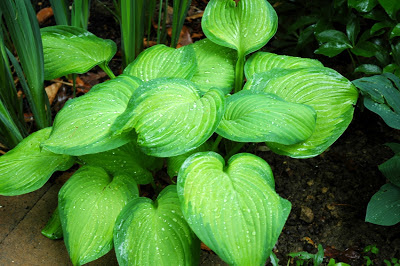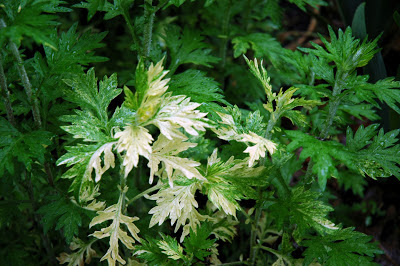Two pink peony with philadelphus blooming in the background.
A double bloom of Iris Sunny Glow. This variety is a little smaller than other bearded irises.
A large unknown pink peony. We moved two pomegranate trees and a large spirea this spring. This let in the sun and the peonies really put on a show.
A group of large unknown white peony taken in the early morning light.
More unknown pink peony.
A double tall bearded purple iris.
We moved this Proteus clematis out from under a lilac because it wasn't getting enough sun. It was in a root cage so I just plopped it down next to our Scotch Broom and it went nuts.
Another unknown peony. I wish we had the names of our peonies.
Spikes of Veronica x spicata Tickled Pink grow to about 10 inches. Pollinators love 'em.
This is the second year for Rogersia aesculifolia and it bloomed! The flowers are small but fragrant. We planted four under a plum tree. This plant can reach 5 feet and clump in a nice group. When mature, the flowers are much larger. It must not dry out so moist to wet soil is best.
A large digitalis or foxglove grew in the Astilbe bed. It must have been a seed on the wind because we didn't sow them last season.
Another wild digitalis in the front yard.
Japanese Fleece Flower or Fallopia japonica “Variegata’ or Polygonatum cuspidatum ‘Variegata' or whatever they call this week is a real standout against the green foliage of its neighbors. We were walking over by Logan Circle in Washington DC and saw some very large and tall mounds.
A double bloom of Iris Sunny Glow. This variety is a little smaller than other bearded irises.
A large unknown pink peony. We moved two pomegranate trees and a large spirea this spring. This let in the sun and the peonies really put on a show.
A group of large unknown white peony taken in the early morning light.
More unknown pink peony.
A double tall bearded purple iris.
We moved this Proteus clematis out from under a lilac because it wasn't getting enough sun. It was in a root cage so I just plopped it down next to our Scotch Broom and it went nuts.
Spikes of Veronica x spicata Tickled Pink grow to about 10 inches. Pollinators love 'em.
This is the second year for Rogersia aesculifolia and it bloomed! The flowers are small but fragrant. We planted four under a plum tree. This plant can reach 5 feet and clump in a nice group. When mature, the flowers are much larger. It must not dry out so moist to wet soil is best.
A large digitalis or foxglove grew in the Astilbe bed. It must have been a seed on the wind because we didn't sow them last season.
Another wild digitalis in the front yard.
Japanese Fleece Flower or Fallopia japonica “Variegata’ or Polygonatum cuspidatum ‘Variegata' or whatever they call this week is a real standout against the green foliage of its neighbors. We were walking over by Logan Circle in Washington DC and saw some very large and tall mounds.




















































